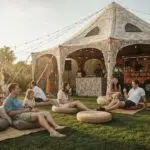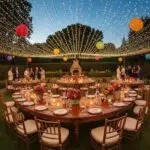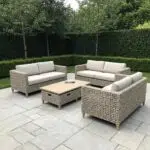Planning a successful event starts with determining the right tent size. The perfect tent not only provides shelter but also creates ambiance and smooth flow and enhances the guest experience. This guide explains common tent types, recommended sizes for various events, and key factors in calculating your tent space to balance aesthetics, comfort, and functionality.
Key Takeaways
- Understand different tent types and their dimensions
- Evaluate recommended sizes based on guest count and event type
- Learn how to calculate the necessary space per person
- Consider extra factors like flooring, lighting, and ground conditions
- Utilize visual tools and expert guidance to meet your event needs
What Are the Different Types of Event Tents and Their Dimensions?
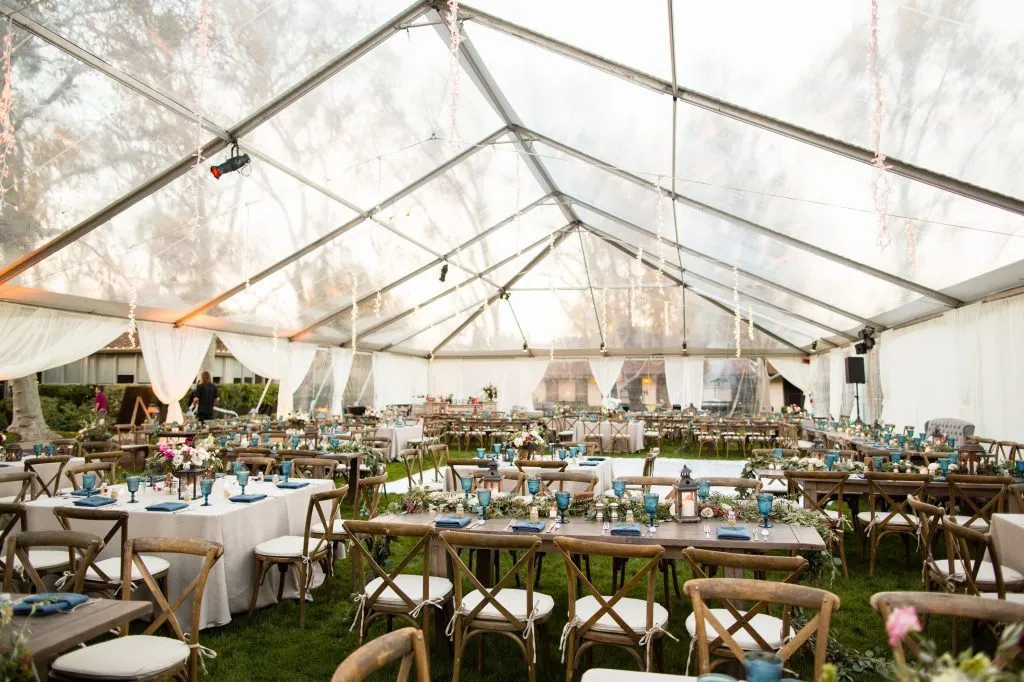
Event tents come in many styles, each offering unique design, space, and functionality benefits. The tent structure impacts installation, appearance, and practical use.
What Is a Frame Tent and When Should You Use It?
Frame tents are self-supporting with rigid frames and no center poles. They provide unobstructed views and versatile dimensions suited for weddings, corporate events, and outdoor parties. For example, a 40×80-foot frame tent can comfortably accommodate up to 500 guests, offering ample dining and dance space, all while supporting heavy roofing needed in unpredictable weather.
How Do Pole Tents Differ in Size and Application?
Pole tents use center and perimeter poles to support the canopy. Their open, airy design is ideal for festivals or outdoor gatherings, though the poles may slightly obstruct views. They range from 20×40 feet for small events to over 100×100 feet for large functions. Their classic look and cost-effective pricing make them popular for budget-conscious events that still require style.
What Are Clearspan Tents and Their Space Benefits?
Clearspan tents offer uninterrupted interior space without support poles. Their monorail or truss design provides complete floor flexibility, which is desirable for formal events like gala dinners or large weddings. With sizes such as 60×120 feet, they allow for customized layouts and integrated lighting while creating a modern, elegant atmosphere.
Which Other Tent Types Should You Consider for Events?
Other options include pagoda tents, sail tents, and dome tents. Pagoda tents deliver a traditional Asian look with dramatic peaks, ideal for themed or garden parties. Sail tents offer smooth, modern lines perfect for cocktail parties, while dome tents are durable and weather-resistant for festivals and outdoor markets.
How Do Tent Sizes Vary by Event Type?

Tent dimensions depend on the event’s nature. Whether the gathering is intimate or large-scale, tailored sizes ensure proper seating, dining, and overall comfort.
What Tent Sizes Are Recommended for Weddings Based on Guest Count?
For weddings, space is needed for seating, dining, a dance floor, a buffet, and a reception stage. A 30×40-foot tent may work for 100–150 guests, while 300–500 guests might require a 60×100-foot tent. Additional space for décor, walkways, or lounge areas ensures a comfortable celebration.
What Tent Dimensions Work Best for Corporate Events and Trade Shows?
Corporate events and trade shows need clear sightlines and efficient space management. A 40×80-foot tent suits medium events with breakout sessions and exhibition booths. Larger conferences or product launches may require 80×150 feet to accommodate registration, stages, and networking zones with both standing and seated arrangements.
How Large Should Festival Tents Be for Different Crowd Sizes?
Festivals need expansive spaces for active and relaxed zones. A 100×200-foot clearspan tent, for example, provides room for food stalls, performance stages, and ample circulation. Generous spacing per person and clear exit routes help manage large crowds safely.
What Tent Sizes Are Ideal for Private Parties and Social Gatherings?
For private parties and smaller social gatherings, intimacy is key. A 20×30-foot tent can suffice for a cocktail party, while a 30×40-foot tent may be ideal for a family gathering. These sizes provide cozy ambiance with enough room for furnishings, décor, and even a small dance area.
How Do You Calculate the Right Tent Size for Your Event?
Calculating the right tent size involves guest count, space per person, and layout requirements. Planners must include clearance for seating, dining, and activity areas.
What Is the Space Per Person Guideline for Different Event Types?
Typically, planners allocate: – 10–12 square feet per seated guest for formal events like weddings. – 8–10 square feet per guest for standing events like cocktail parties. Up to 15–20 square feet per person for trade shows or exhibitions.
How Does Guest Count Influence Tent Dimensions?
The total floor area directly corresponds to guest numbers. For instance, a dinner event for 100 guests (at 10 square feet each) requires at least 1,000 square feet, plus extra space for tables, buffets, and stages to avoid crowding.
What Role Does Event Layout Play in Tent Size Planning?
Event layouts affect spacing, for example, separate zones for dining, dancing, or the ceremony. Well-planned layouts maximize comfort, minimize overcrowding, and build visual appeal. Tools like tent size calculators help planners input data and visualize different configurations.
What Are the Best Tent Layout and Seating Arrangements for Various Events?
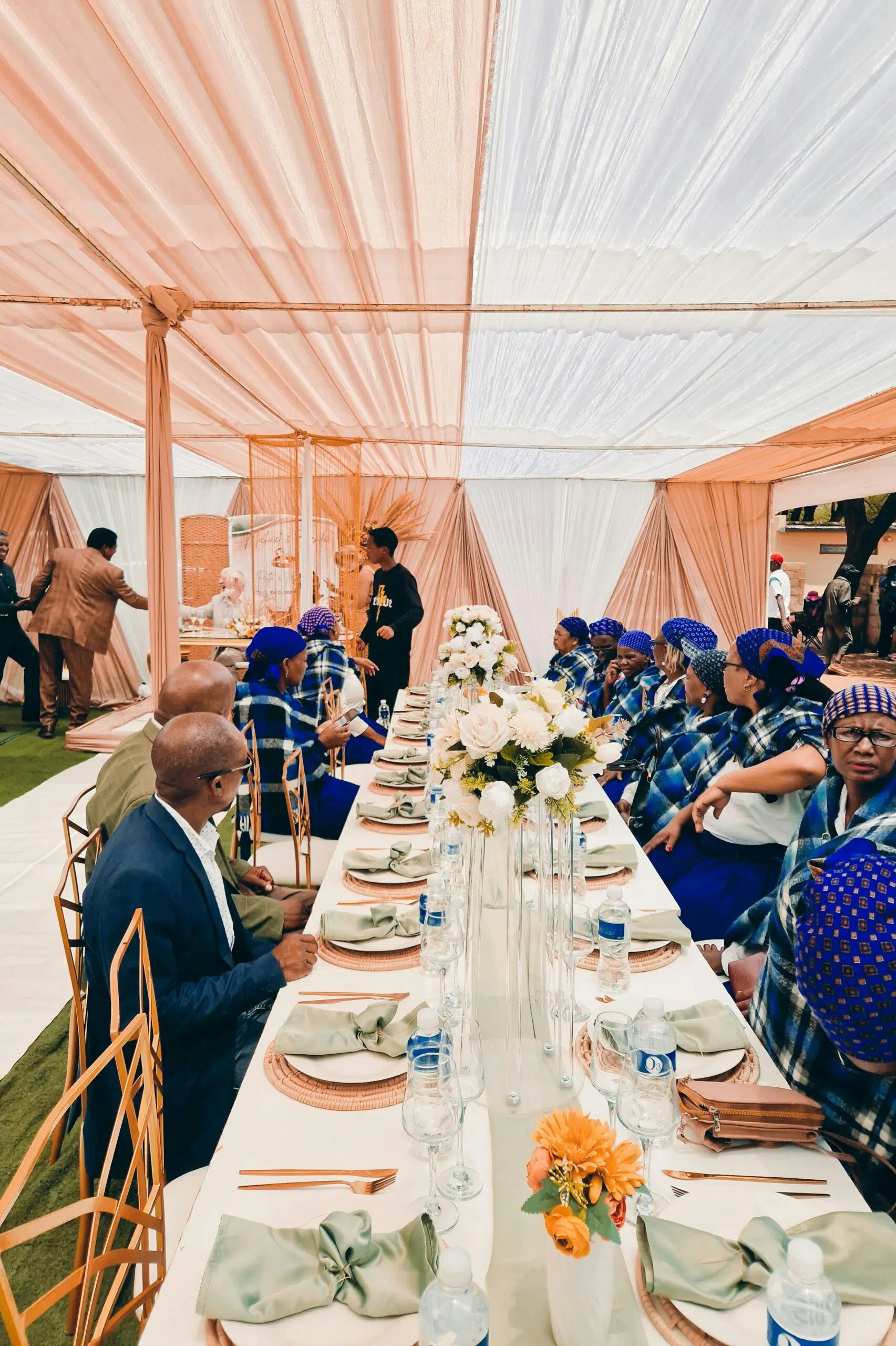
Effective layouts and seating arrangements are crucial for smooth event flow and guest comfort.
How to Design Wedding Tent Layouts for Comfort and Flow?
For weddings, divide the tent into zones for dining, the ceremony, and dancing. A U-shaped seating layout, often combined with round tables, promotes conversation while keeping the focus on the couple.
What Are Effective Corporate Event Tent Layouts?
Corporate layouts should include clear registration areas, breakout rooms, and a central stage with surrounding seating. Partitioning can allow multiple sessions or exhibitions within the same space, enhancing professionalism and engagement.
How to Arrange Festival Tent Spaces for Maximum Capacity and Safety?
Festival setups benefit from open floor plans that create distinct areas for stages, vendors, and rest zones, with clearly marked emergency exits. Modular layouts can be adjusted to meet capacity and safety standards as crowd sizes change.
What Seating Options Work Best for Private Parties Under Tents?
For private parties, flexible seating such as cocktail tables and lounge clusters allow guests to mix, mingle, or formal dine as needed while maintaining a warm, personalized atmosphere.
What Additional Factors Affect Tent Size Selection and Event Success?
Several factors beyond basic dimensions influence the choice of tent size.
How Do Flooring, Lighting, and Accessories Impact Tent Space Needs?
Flooring options (gravel, concrete, or carpet) directly affect usable space and guest comfort. Integrated lighting, heating, or cooling systems enhance the event atmosphere without compromising space. For example, a heated floor can be crucial during colder events.
What Are Common Permitting and Regulation Requirements for Tent Setup?
Local codes may limit occupancy and require extra space for emergency exits and clearances. Ensuring the chosen tent size complies with permits is essential for a hassle-free setup.
How Does Site Assessment and Ground Condition Influence Tent Choice?
Evaluating the site’s terrain—whether asphalt, concrete, or uneven earth—determines the type of flooring and stabilizing accessories needed. A proper site assessment ensures both the tent’s stability and safety.
How to Request Expert Guidance and Tent Rental Services for Your Event?
Expert consultation is key when choosing tent size and features. Professionals can assess site conditions and event needs to provide tailored recommendations.
When Should You Contact Tent Rental Professionals for Size Recommendations?
Early consultation is recommended to address site conditions, weather uncertainties, or complex layouts. Experts can guide you to the most suitable tent type and features.
What Customization Options Are Available for Tent Sizes and Features?
Rental services may offer adjustable sidewalls, specialty flooring, integrated lighting, and heating or cooling solutions. These customizations ensure the tent meets logistical and thematic requirements.
How to Request a Quote and Book Tent Rentals for Your Event?
Provide details such as guest count, event duration, and layout needs to get an accurate quote. Early booking typically ensures better availability and pricing.
Tent Options and Their Benefits
Before the final thoughts, refer to the quick summary below:
| Tent Type | Typical Dimensions | Best For | Key Benefit |
|---|---|---|---|
| Frame Tent | 40×80 feet (varies) | Weddings, Formal, Corporate Events | Unobstructed space and flexible layout |
| Pole Tent | 20×40 to 100×100 feet | Festivals, Casual Gatherings | Cost-effective with natural aesthetics |
| Clearspan Tent | 60×120 feet (varies) | Large Weddings, Corporate Events | Maximum internal space, modern design |
| Pagoda/Sail/Dome | Varies by model | Theme Parties, Outdoor Markets | Unique design and visually appealing formats |
Final Thoughts
Selecting the right tent size is crucial for guest experience, safety, and overall visual appeal. By understanding the different tent types, recommended sizes for various events, and additional factors like layout, flooring, and lighting, you can create an event space that perfectly meets your needs. Use visual planning tools and expert consultations to ensure every detail is covered, making your event both memorable and successful.
Frequently Asked Questions
Q: How do I choose the right tent type for my event?
A: Consider your event’s purpose, guest count, and layout needs. Frame tents offer clear spans while pole tents provide a rustic look. Evaluate based on weather and venue conditions.
Q: What is the recommended square footage per person in a tent?
A: Generally, 10–12 square feet per seated guest and 8–10 square feet per standing guest is advised, with additional space for dining and movement.
Q: Can I customize the tent layout for better guest flow?
A: Yes, many services offer options like modular partitions and adjustable sidewalls to optimize seating and circulation.
Q: How do environmental factors affect tent size selection?
A: Ground conditions, weather, and local permits all influence tent size. Comprehensive site assessments help ensure your tent is safe and suitable.
Q: Where can I get interactive tools to calculate tent size?
A: Many tent rental companies offer online calculators and virtual tours that let you input event details and view recommended setups.

